
Elephant seals have physiological and anatomical adaptations that enable them to store oxygen for these long dives. They have a much larger quantity of blood than can be stored in their arteries and veins. This extra blood is oxygenated and stored in sinuses located in the seals abdomen. When their body is in need of the extra oxygen, the stored blood is released into the blood stream and pumped to the muscles and tissues.
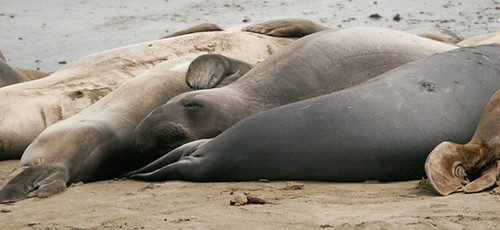
Elephant seals also have a compound in their muscles called myoglobin that allows the muscle cells to store extra oxygen.
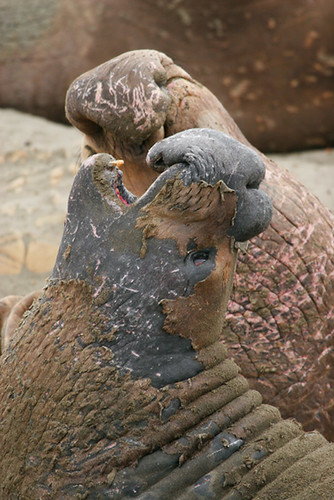
Twice a year Elephant seals haul their huge bodies out of the ocean and onto the beach in order to breed and shed their old skin. The skin actually dies as a result of being denied sufficient oxygen during long dives. During these times the males have no chance to eat. Since most of their water is metabolized from the food they eat, they must conserve all the moisture that they can in their bodies.
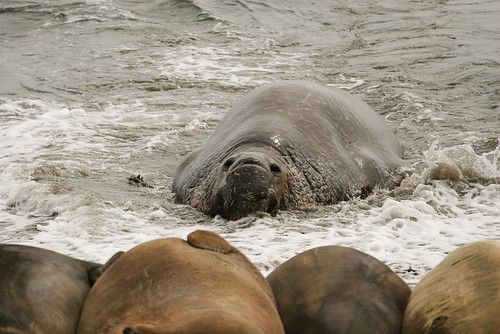
The large trunk on the males actually serves to recycle the moisture from their breath as they exhale. This moisture is captured in sinuses within the trunk and is reintroduced into the animals body. All-in-all, a pretty amazing creature.
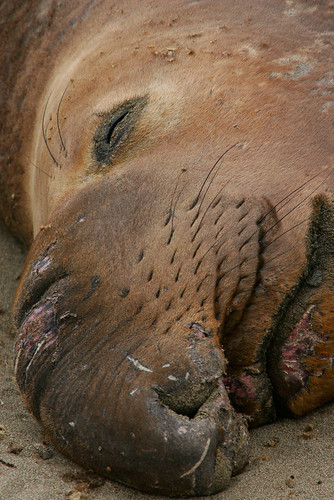
The molt is a great time to photograph these huge creatures. I recommend going to Cambria, California in early June and spending some time on the beach near San Simeon. There is a large colony there and the action continues all day long. The angle of the sun is best in the morning as it will be over your shoulder instead of in your face.
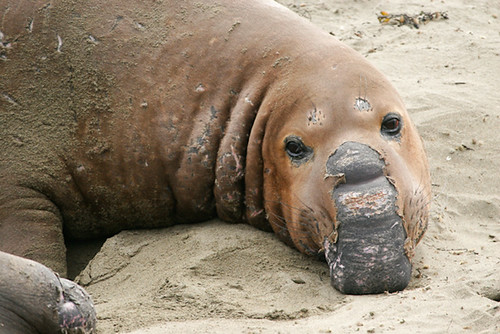
No comments:
Post a Comment